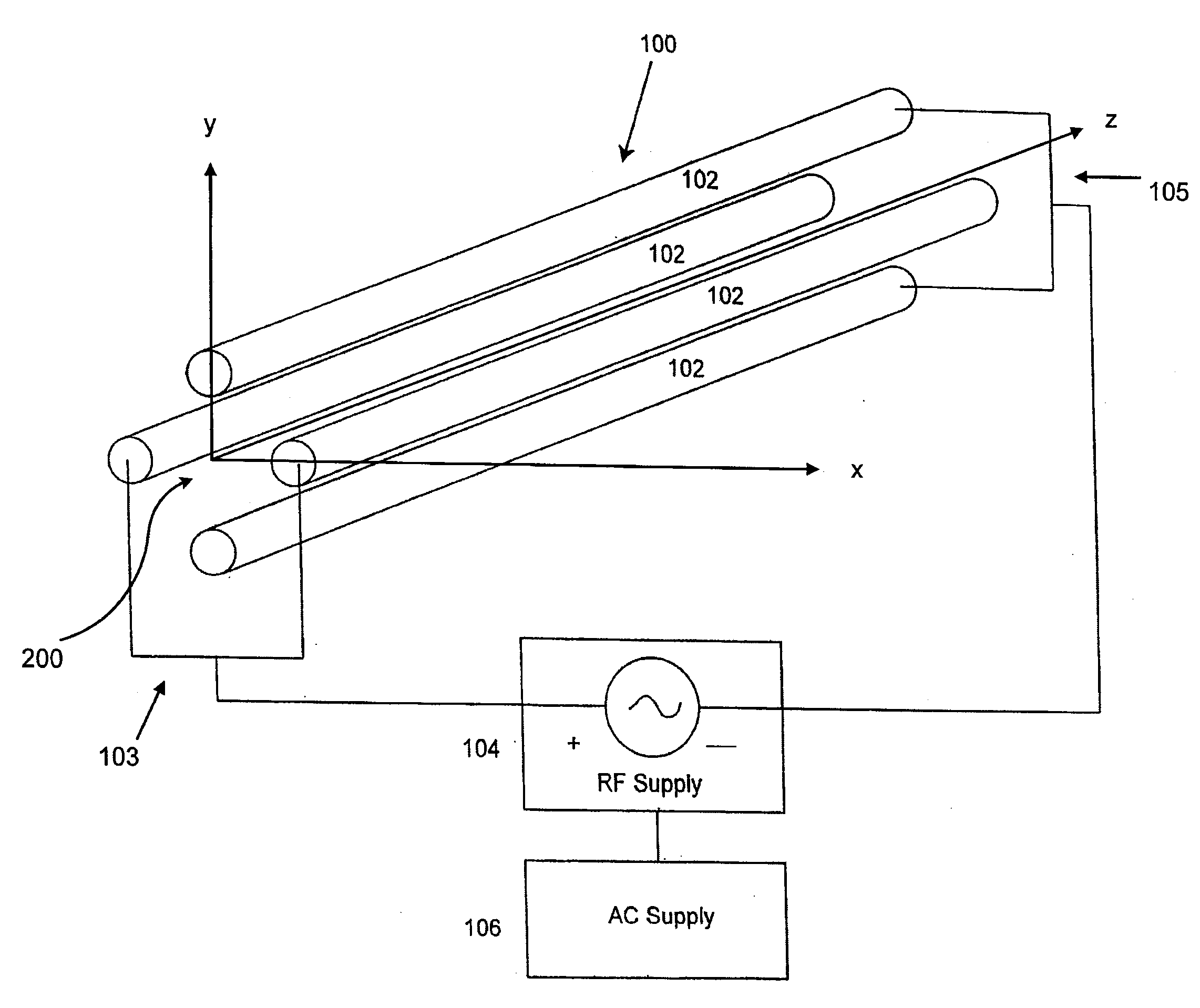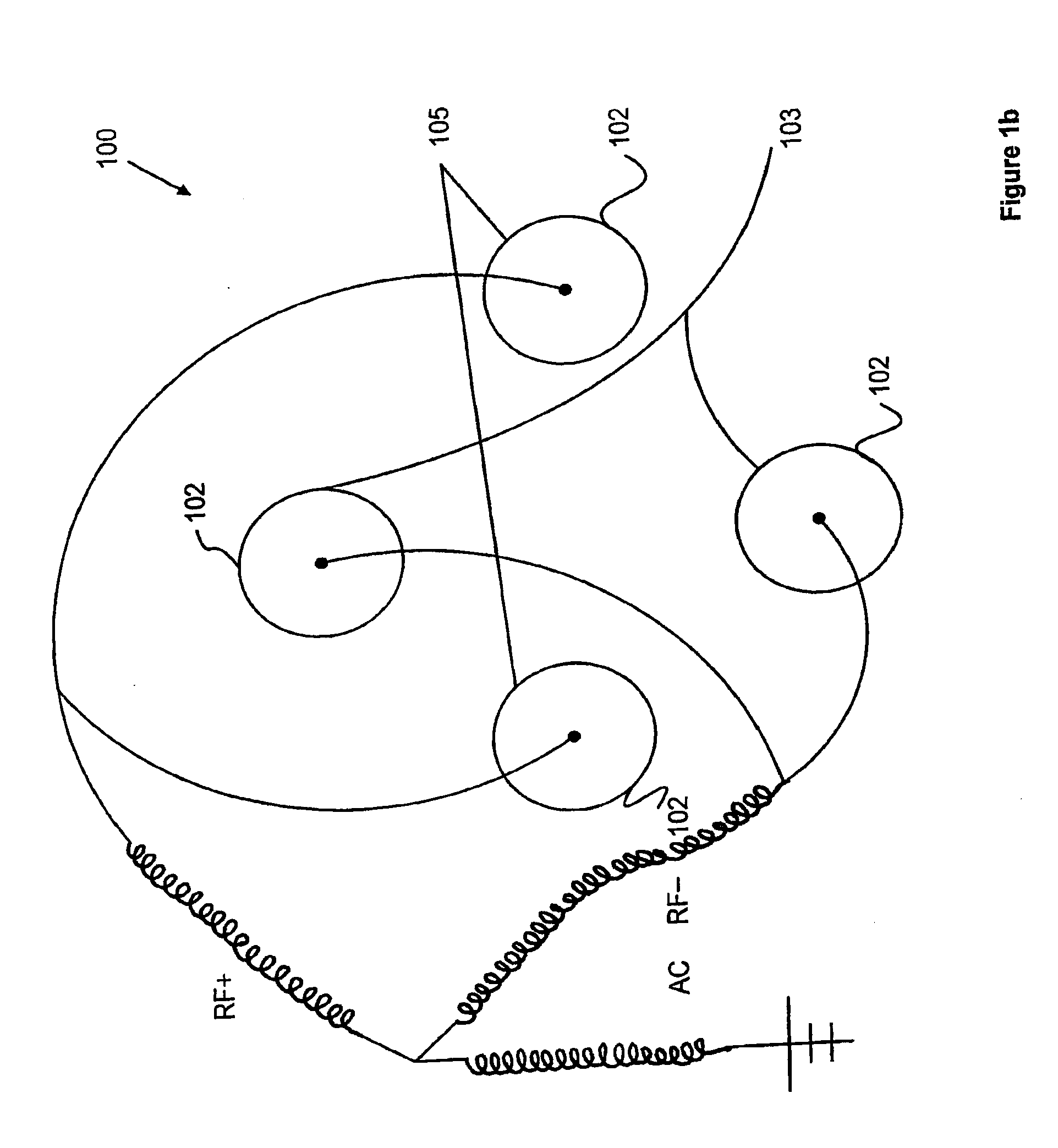Confining ions with fast-oscillating electric fields
a technology of fast oscillation and electric field, which is applied in the field of mass spectrometry, can solve the problems of limited success of the approach, difficulty in manipulating ions in the affected adjoining elements, and field extension into the regions of adjoining elements of the spectrometer, and achieves the effect of increasing the analytic possibilities
- Summary
- Abstract
- Description
- Claims
- Application Information
AI Technical Summary
Benefits of technology
Problems solved by technology
Method used
Image
Examples
Embodiment Construction
[0014]FIGS. 1a and 1b are schematic representations of multipole rod electrode sets suitable for use in implementing the applicants' teachings.
[0015]In FIG. 1a, rod electrode set 100 comprises a plurality of rod-shaped electrodes (“rods”) 102 electrically connected to RF power supply 104 and AC power supply 106. In the example shown, the plurality of rods 102 comprises 2N rods, where N is 2, and the 2N rods are disposed in opposing sets.
[0016]As will be understood by those of ordinary skill in the relevant arts, once they have been made familiar with this disclosure, a wide variety of multipole configurations are suitable for use in implementing applicants' teachings. In particular, it will be understood that rod electrode set 100 may comprise any even number of rods greater than 3. Many rod electrode sets suitable for use in implementing applicants' teachings are commercially available today, the quadrupole arrangements such as that shown in FIG. 1a being perhaps the most common. O...
PUM
 Login to View More
Login to View More Abstract
Description
Claims
Application Information
 Login to View More
Login to View More - R&D
- Intellectual Property
- Life Sciences
- Materials
- Tech Scout
- Unparalleled Data Quality
- Higher Quality Content
- 60% Fewer Hallucinations
Browse by: Latest US Patents, China's latest patents, Technical Efficacy Thesaurus, Application Domain, Technology Topic, Popular Technical Reports.
© 2025 PatSnap. All rights reserved.Legal|Privacy policy|Modern Slavery Act Transparency Statement|Sitemap|About US| Contact US: help@patsnap.com



